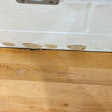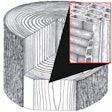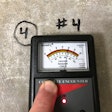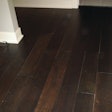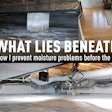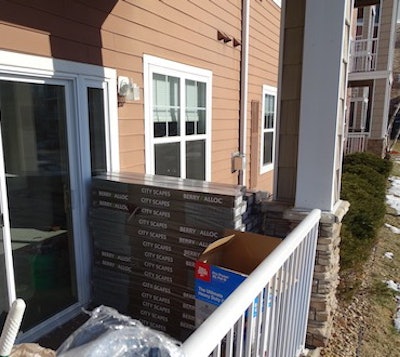
On one of my latest inspections, it was already agreed by all parties that the floor was going to be replaced. The distributor wanted the independent inspection to happen on the day of the flooring removal so if any destructive testing were required for the inspection, there would be installers already there to remove the flooring. I arrived about 1 1/2 hours early to get a jump on the installers so I could complete the majority of my inspection.
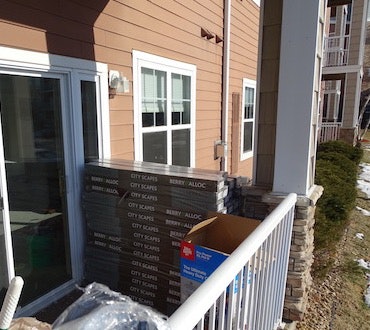

For example, in this inspection, even if the installer tries to fabricate information, he still will get tangled up when inspector researches the invoices, purchase orders, etc., and finds the floor was not installed to manufacturer requirements. This is where most installers fail and get tossed under the bus. One installer told me he doesn’t do moisture tests—that way he can’t lie about what the readings might have been.
In several installer classes I have taught over the years, I’ve suggested making sure you have “Inspection Protection”—in other words, test and verify. If the installer performs the required tests and documents everything, in many cases the liability will roll downhill to someone else. With today’s phone technology, you can geotag photos, providing the exact date and location of the photos that are stored in the cloud. This way no one can argue about fabricating data. Many installers tell me, “We don’t have time to stop by the project and test subfloors or ambient conditions before arriving.” I totally get that. Time is money. What I encourage is to buy a moisture meter for your project managers and have them test. When the moisture content is good, you can install. Yes, you will have a couple thousand bucks invested in meters, but two delays on large projects will pay for the investment as well as covering your own time.
Here comes the kicker: If your floor fails and it’s due to improper installation practices or workmanship, the typical replacement costs will be four to six times the number on the original contract, especially when you add removal and replacement of cabinets, any paint work, the millwork, etc., and putting up the customer’s family in a hotel for two weeks while the work is done. I have seen a $20,000 floor easily cost up to $100,000 for replacement—and in many cases, insurance won’t cover faulty workmanship.
So for you installers out there, remember that inspectors are constantly attending continuing education classes to improve their skill sets, and the good ones know the relevant guidelines forwards and backwards. If you practice “Inspection Protection” protocol, you will be one step ahead of the inspector and keep your money in your pockets rather than the inspector’s pockets.





















